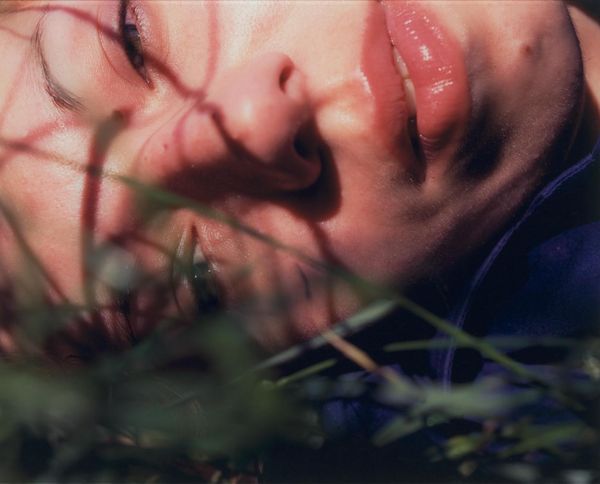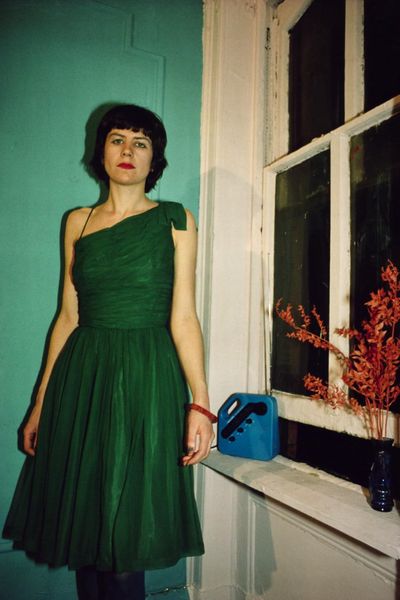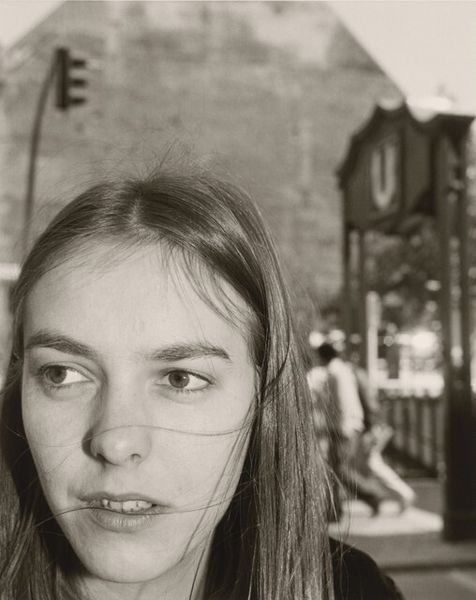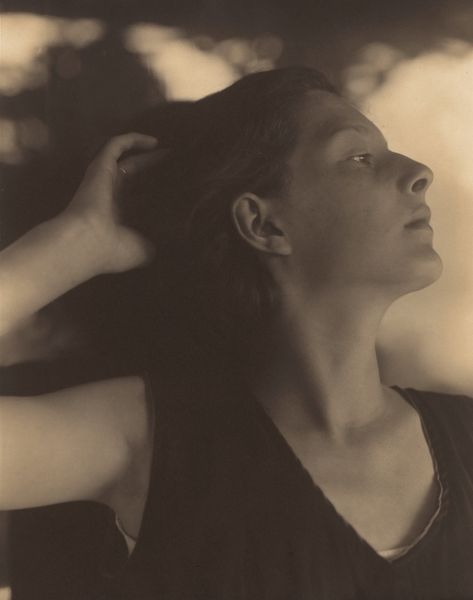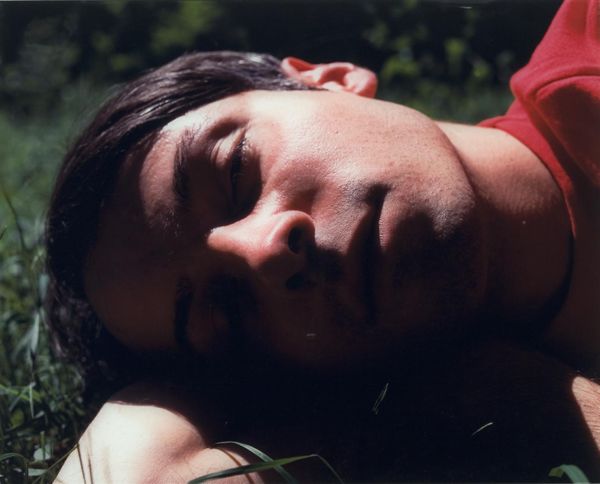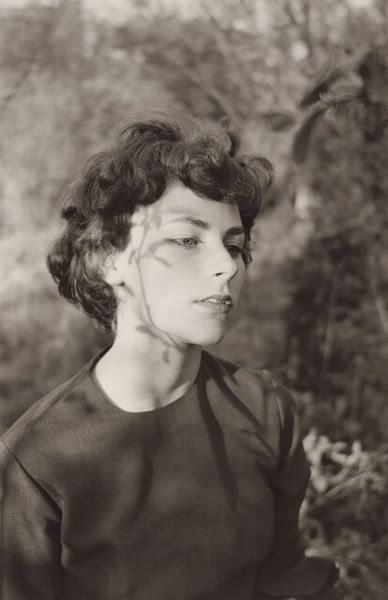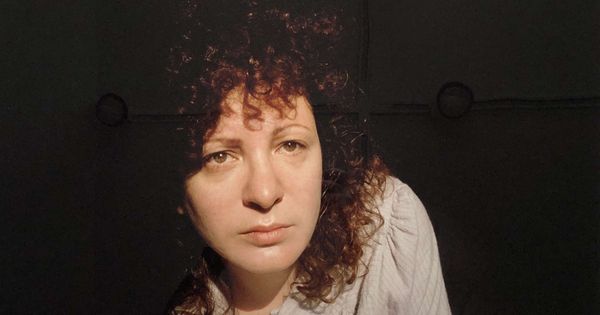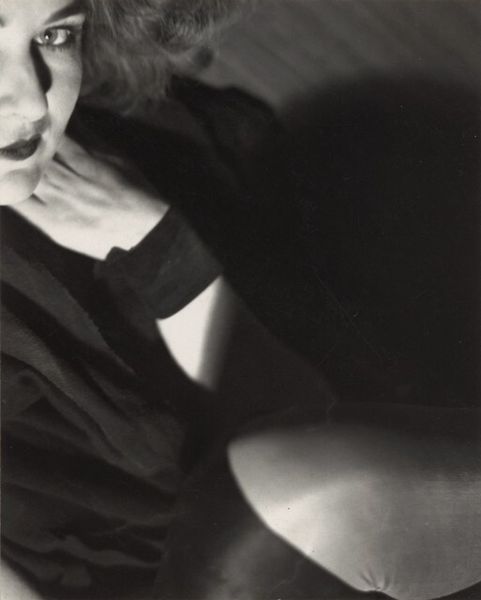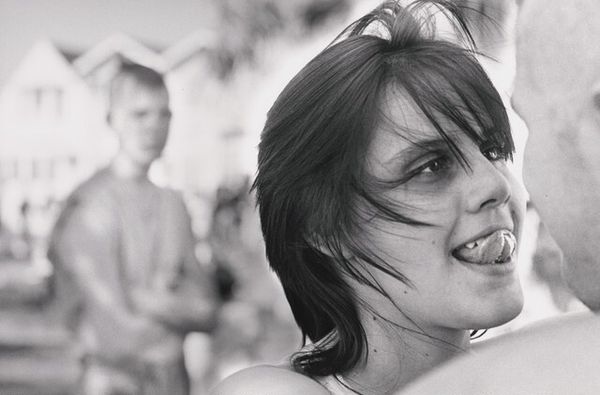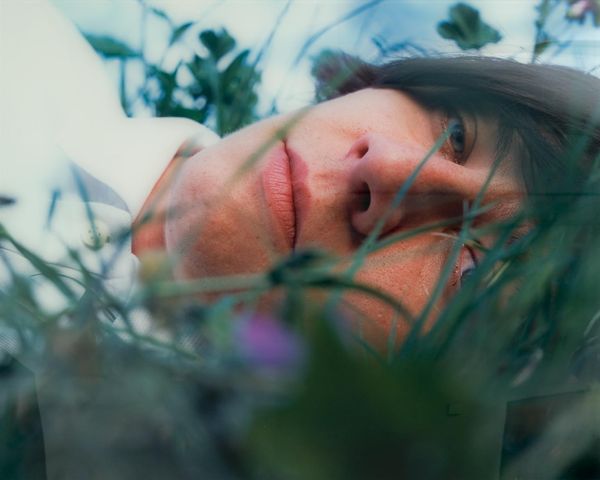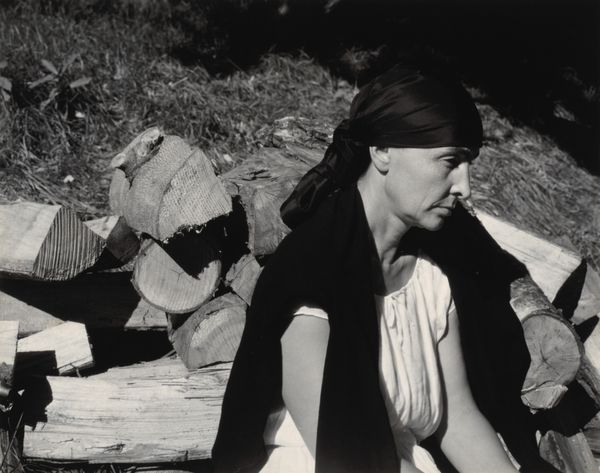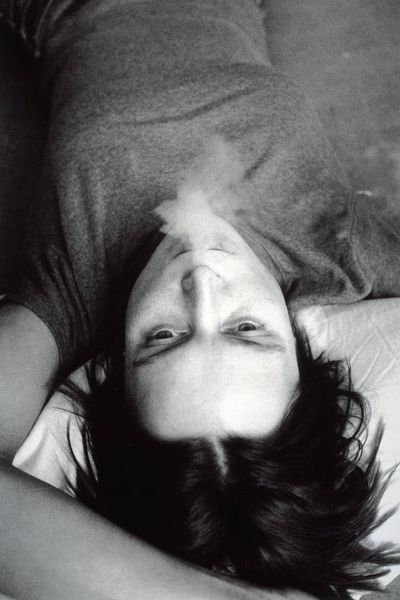
Dimensions: support: 762 x 914 mm
Copyright: © Phil Collins, courtesy Kerlin Gallery, Dublin | CC-BY-NC-ND 4.0 DEED, Photo: Tate
Editor: So, this is Phil Collins' "Vesna," a photographic print. The close-up, the grass, it feels very intimate, almost like a snapshot. What catches your eye? Curator: It's fascinating how the materiality of the photograph itself—the paper, the printing process—contributes to this sense of intimacy you mention. Consider the labour involved in its production, the layers of decisions about framing and perspective. How does the seemingly casual composition belie the artifice of its creation? Editor: That's interesting. It does feel constructed now that you mention it, not at all candid. What do you think about its social context? Curator: Collins often explores marginalized communities and the systems that produce them. In what ways might this portrait, this "Vesna," challenge our consumption of images and our expectations of portraiture? Are we seeing the subject or a representation shaped by the artist's hand and the photographic medium itself? Editor: I hadn't considered it that way. It’s much more complex than just a pretty picture. Curator: Exactly! Thinking about the labour and the means of representation makes the image so much richer.
Comments
Join the conversation
Join millions of artists and users on Artera today and experience the ultimate creative platform.
tate 8 months ago
⋮
This is one of a series of five portraits of young people living in Belgrade. The photographs were taken approximately eight months after the democratic revolution of 5th October 2000, when mass demonstrations in Belgrade and other Serbian cities overthrew the regime of communist leader Slobodan Milosovic (born 1941). Collins photographed individuals he knew well, focusing on close-up and sometimes partial views of their faces as they lay on grass, possibly in a park. In some images, long blades of grass partly obscure the subjects’ faces, casting dark shadows in the bright sunlight. In others, the subject is further away and appears more autonomous from the viewer. The photographs feature rich, saturated colour and a sensual atmosphere created by the juxtaposition of sun-drenched skin in the sun on the grass and the close proximity of a face-to-face encounter. The romantic theme of youth coupled with nature is undercut by the disenchanted gaze of the subjects who, although pictured looking back at the viewer, appear distant and lost in their own thoughts. In this image, Vesna rests her face on her hand, her long, brown hair flowing onto the grass in front of her. Her expression is deeply melancholic.
